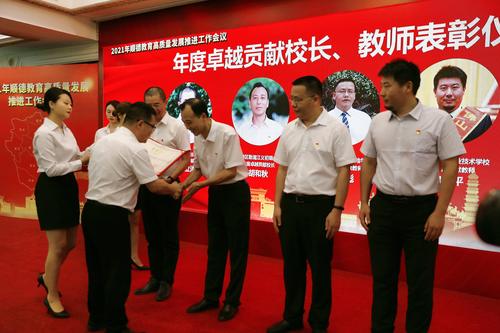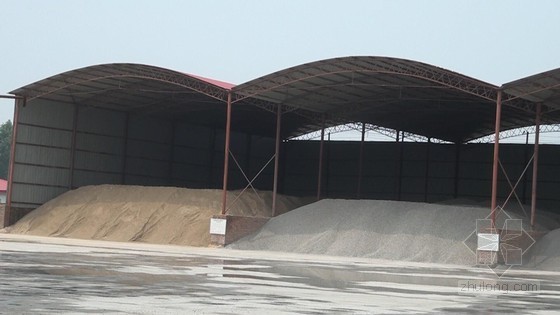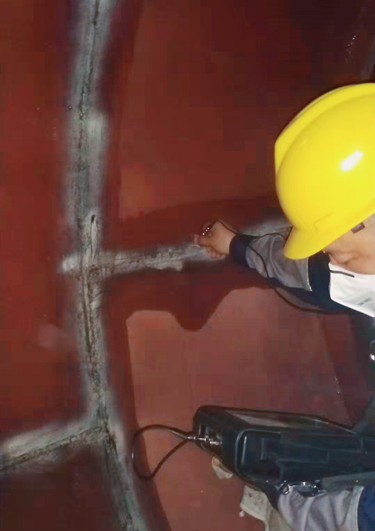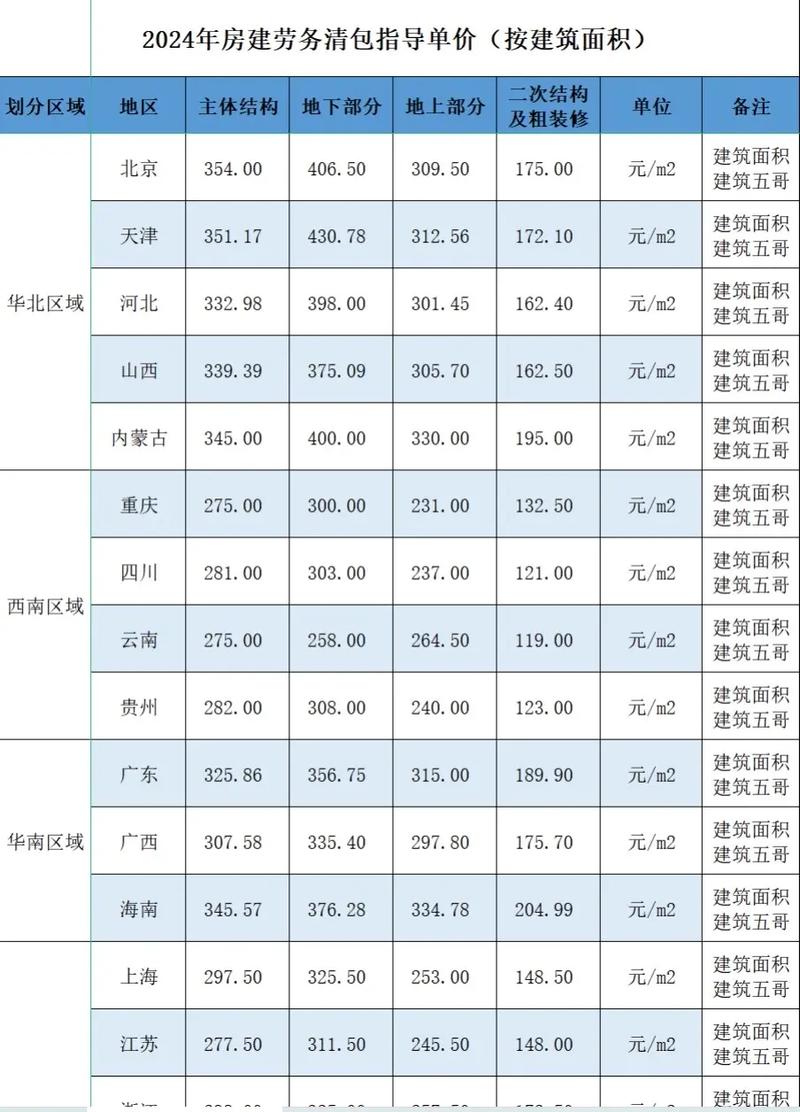特刊的主编
Yu Yinquan,国家工程调查和设计硕士钢结构杂志社,中国建筑标准设计学院有限公司,教授级高级工程师,第一级注册结构工程师,国家建筑窗帘壁门和Windows Windows标准化技术委员会主席,以及住房和城乡农村发展科学技术委员会的超级限制高层建筑工程副主席,技术专业委员会,中国钢铁结构协会副主席,中国工程建筑标准化副主席,主席中国调查与设计协会的地震抵抗和预防灾难分支,以及享受特殊政府津贴的专家。长期以来,他从事标准和规格和结构工程设计研究的准备。他编辑了7个国家工程建设标准,进行了10项国家和省级科学研究项目,主持并指导了许多有影响力的建筑工程项目和标准设计项目的设计,并发表了40多篇论文。赢得2个国家优秀工程设计奖,霍西亚科学和技术进步奖的5次奖项,赫比科学技术进步奖1奖,北京科学技术进步奖1二等奖,中国钢结构结构协会科学1特别技术奖奖和中国标准创新贡献奖的1二等奖。
特刊副主编
张金,女性,1970年10月出生于1970年10月,宗亨设计集团有限公司的首席工程师,第14届全国人民大会代表,建筑工程科学和技术委员会的地震国防专业委员会成员住房和城乡发展,以及高级研究员级工程师,国家一流注册结构工程师,结构和特许结构协会的成员(Mistructe,Ceng)。他很长一段时间以来从事结构设计和技术研发,尤其是在地震性能设计中。在省和部长级或更高级别获得70多个优秀设计奖钢结构协会科学技术奖以及其他科学技术技术。类别的奖项。他参加了10多个国家,省和行业标准的汇编,出版了2份专着,并发表了40多篇学术论文。
目录
01分层层次结构的地震抗性性能及其在钢框架中心支持结构系统中的设计方法
Zhang Jin,Yang Lulei,Gong Minfeng,Sun Yibin
在偏心弯曲的钢桁架走廊结构中应用12个性能设计方法
Guo Yifeng,Yang Lulei,Sun Yibin,Gong Minfeng,Zhao Jianzhong
20基于平方横截面钢组件应变的地震性能评估指数的研究
Wang Libo Shu Gan Ping Zhang Jinfu Henry Chen Zhanpeng
29关于预制的自我重构钢支持结构系统的地震性能的研究
Jiang Ziqin Wang Tongkuan Zhang Wenying Han Wei Zhuan Zhuang
38个跨形芯缸和八角形芯缸钢管柱的地震性能的比较分析全螺栓连接节点
Zhang Yanxia shi tianhao wu bing line lin zhengqi
分析49个模块化钢制框架模块中套筒连接节点的抗性和应力机制
Xu Xiaoxiao,Wang Yan和Qi
分析地震抵抗力和61个大跨和弦式棒棒桁架结构的强烈地震崩溃
Wu Jinzhi,Li Yang,Liu Mingliang,Sun Gujun,Hou Yijun,Zhou Chunjuan
74预制的预制混凝土柱研究对钢梁干连接节点的地震性能和旋转刚度
Lu Jingfu Xu Leiyu Tian Chunyu Shen Jiani
86基于舒适性能的大型跨度行人桥的风振动控制的研究
Wang Yihan,Fu Wenwei,Chen Xin,谈论Lihua
在95弯曲组合的作用下,延长端板节点整个过程的机械性能的有限元分析
Gao Yuguan Tang Yiqun du Erfeng
分层层次结构及其在钢制框架中心支持结构系统中的地震抗性性能的设计方法

Zhang Jin,Yang Lulei,Gong Minfeng,Sun Yibin
宗设计集团有限公司
摘要:抗震性能设计将传统经典标准设计方法中的宏观验证强化目标转化为可以量化和分析的多层次性能目标。基于数值模拟分析,采取有针对性的措施来满足结构性能的性能。结构个性化的地震需求。它适用于难以充分利用各种过度调节结构的结构性能的优势,以及高性能等经典规范的优势。首先,根据对地震绩效设计钢结构杂志社,组件性能评估标准和工程应用的研究,作者团队提出了一种分层和分层的地震性能设计方法,并详细描述了该过程中涉及的强化目标确定和概念。设计,绩效目标设置,结构分析和绩效评估以及其他主要链接。该方法通过分层的层次结构详细介绍了结构和组件的性能目标,从而阐明了在地震作用分析中弹性分析的重要性,并使用绩效评估结果作为判断结构可行性以实现结构绩效目标的主要基础和组件。 。随后,以高强度区域为例以建造的多层钢制框架中心支持结构项目,探索了分层和分层的地震性能设计方法的工程应用及其与传统标准设计方法的差异。在设计过程中,概念设计,性能目标设置和初步设计是根据“弱支持”设计概念完成的,并与计算机算法结合使用,主要组件最低钢的目标是目标,并且位移结构层之间的角度,组件应力比和损伤水平。约束是指数不超过预设绩效目标范围的约束,并且已经完成了结构分析,性能评估和设计调整的自动迭代优化。设计结果表明,与基于传统标准方法设计的原始解决方案相比,支持跨框架列部分大大减少,并且主要组件钢的使用量减少了约23%。在罕见的地震下,整体结构的最大层间位移角降低,地震的最大输入能量减少,塑料能消耗增加。垂直组件的损坏程度有效地降低了,而支撑损伤分布更加均匀,能源消耗系统更加合理和有效。 ,同时减少所用的钢量,可以获得更好的地震抗性。
关键词:地震性能设计;钢制框架中心支撑结构;钢铁支撑;绩效评估;结构优化
图14框架柱的损坏状态分布的比较
报价格式
Zhang Jin,Yang Lulei,Gong Minfeng等。用于分层和分层地震性能的设计方法及其在钢制框架中心支持结构系统中的应用[J]。钢结构(中文和英语),2024,39(12):1-11。
doi:10.13206/j.gjgs24110501。
单击以获取全文
性能设计方法在偏心钢桁架走廊结构中的应用
Guo Yifeng,Yang Lulei,Sun Yibin,Gong Minfeng,Zhao Jianzhong
宗设计集团有限公司
摘要:讨论了性能设计方法在某个偏心钢桁架结构系统中的应用。基于非均匀束的机械性能,研究了偏心钢桁架的中间部分与两端连接梁的刚度与桁架的内力分布的比率。影响。通过合理的结构初步设计,控制了钢桁架中间部分和连接梁的弯曲刚度比,因此可以轻松地满足连接束的轴承能力要求,同时,轴承能力的设计要求主结构的连接范围减小。分析并分别评估了结构的地震性能,节点应力,舒适性能和连续塌陷的抗性。结果表明,通过合理的性能设计,所有结构指标都符合预期的性能目标要求,并且可以为类似项目设计。参考。
关键字:钢制走廊;偏心桁架结构;性能设计;地震设计;地板舒适;抗连续崩溃
图11怪异弯曲钢桁架的内力分布
报价格式
Guo Yifeng,Yang Lulei,Sun Yibin等。性能设计方法在怪异弯曲钢桁架走廊结构中的应用[J]。钢结构(中文和英语),2024,39(12):12-19。
doi:10.13206/j.gjgs24102901。
单击以获取全文
基于平方横截面钢组件应变的地震性能评估指数的研究
Wang Libo1 Shu Ganping1 Zhang Jin2 fu Henry1 Chen Zhanpeng1
1。东南大学土木工程学院
2。方兴设计集团有限公司

摘要:为了准确评估平方横截面钢组件的变形能力,提出了基于塑料区域的应变的地震性能评估指数。在6个平方的横截面钢组件上进行了低循环往复测试,以研究样品的故障模式和磁滞性能。样品最终变形且塑料区的长度以获得样品应变延展性系数。测试结果表明,所有测试件在法兰和Web中都损坏,并且两者的变形过程相互协调。磁滞曲线是主轴形的,充满了,具有良好的能量消耗能力。方形横截面钢组件的最终应变和应变延展性系数随着板宽度厚度比和轴向压比的增加而逐渐降低。根据实验结果,通过参数化分析研究了有限元模型的有效性,并通过参数化分析研究了法兰宽度厚度比,粘膜高度厚度比和轴向压缩比对应变延展性系数的影响。研究表明,正方形横截面钢组件的应变延展性系数显示出向下趋势,随着法兰宽度厚度比,Web高度厚度比和轴向压缩比的增加。通过回归分析提出了推荐的应变延展性系数计算公式,并验证了计算公式的有效性。
关键字:方形横截面;应变延展性系数;低周期往复测试;宽度厚度比;轴向压缩比
图15样品的磁滞曲线和骨骼曲线
报价格式
Wang Libo,Shu Ganping,Zhang Jin等。基于方形横截面钢组件的应变的地震性能评估指数的研究[J]。钢结构(中文和英语),2024,39(12):20-28。
doi:10.13206/j.gjgs24112803。
单击以获取全文
研究预制的自我分离钢支持结构系统的地震性能
Jiang Ziqin1,2 Wang Tongkuan1 Zhang Wenying1 Han Wei1 Zhuang Zuosong1
1。北京技术大学城市建设系
2。北京技术大学,北京高层和大型预应力钢结构结构工程技术研究中心
摘要:为了研究可回收功能结构的地震性能和能量耗尽组件的简化建模方法,根据传统的刚性连接的钢制框架,提出了一种新的预制自动自动钢钢支持结构系统。该系统附在传统的刚性框架上。替换组件(双屈服点预制的抗弯曲支撑,自我归化的预应力钢框架束和柱状柱节点,狗骨骼削弱盖)。可更换组件的简化计算模型是通过有限元软件OpenSees建立的,并且通过将其与现有数据进行比较来验证简化模型的正确性。基于提出的地震性能设计目标,设计了一个新的预制系统,并通过弹性塑料时间范围分析(NLTHA)研究了新系统的地震性能。研究表明,所提出的简化计算模型具有很高的精度,可以应用于系统的弹性时间课程分析。根据建议的地震性能指标设计的新预制系统优于传统系统,而新的组件是最大的顶层位移和类型系统的最大层间位移角度小于传统刚性钢铁的钢框架结构系统和传统的刚性钢铁支撑结构系统。 X和Y方向的最大顶层位移和最大层间位移角度大于传统的刚性钢的钢。框架结构系统平均下降了28.35%,10.13%,26.86%和10.42%;预制的抗卵子支撑的双重屈服点可以控制结构的层间变形,并带有狗骨骼弱盖板的自复分预应力的钢制框架梁和柱节点。增加可以进一步提高其能源消耗能力。
关键字:可恢复的功能结构;自复分梁和柱节点;双收益点反扣载支架;连接单元方法;地震时间范围分析
图8磁滞曲线分析和比较
报价格式
Jiang Ziqin,Wang Tongkuan,Zhang Wenying等。关于预制的自我分析钢支持结构系统的地震特性的研究[J]。钢结构(中文和英语),2024,39(12):29-37。
doi:10.13206/j.gjgs24031902。
单击以获取全文
跨形芯缸和八角形芯缸钢管柱的地震抗性性能的比较分析全螺栓连接节点
Zhang Yanxia1,2 Shi Tianhao1,3 Wu Binglong1 Lin Zhengqi1
1。北京建筑大学土木工程与运输工程学院
2。北京节能和减排和城市农村可持续发展共同建造的合作创新中心
3。

摘要:传统钢结构方形钢管柱的完全渗透的焊接连接节点,例如低建筑效率,高人工成本和环境污染等问题。为了解决上述问题,研究小组提出了一个内置的八角形核心缸平方钢管柱完整螺栓连接节点。该节点通过设置核心缸和高强度螺栓来连接上和下柱,以实现完整的现场组件。已经完成了一系列与节点有关的实验研究,例如同时力,同时力和振动表。结果表明,该节点形式具有与焊接节点更一致的机械性能,并且还可以在施工位点实现有效的组装。此外,在八角形核心缸的强弹性轴承能力的基础上,提出了一个交叉形的核心缸,以进一步改善建筑便利和经济性,减少所用钢和焊接工作的量。通过有限元软件Abaqus,建立了带有内置八角形芯缸和内置的跨形核心缸的方钢管柱完整螺栓连接节点的有限元分析模型。分析了将压力应用于两个连接节点组件的整个过程,并分别比较了总体标本和局部组件。应力特征的塑性发育,最终形成损害。在此基础上,进一步比较和分析了两个连接节点的地震抗性性能,包括磁滞曲线,骨架曲线,刚度降解,能量消耗性能和残余变形。
有限元分析结果表明,在往复负荷下,两个节点故障形式相对相似,这两种都是塑料铰链在列底部的横截面故障。两个节点中的磁滞曲线已满,没有明显的捏现象。等效粘性阻尼系数为0.25至0.28。两者具有良好的地震抗性,弹性层之间的位移角范围为1/36至1/22,并且在弹性塑料层之间。位移角度全部为1/15,所有这些都符合GB/T 50011-2010“建筑地震设计标准”的要求;与内置的八角形芯缸节点形式相比,内置交叉形芯缸节点形式的屈服轴承能力减少了7。 5%〜16.3%,峰值轴承能力降低了7.8%,而延展性性能提高了约66.7%。内置TENS是在向前加载到位移角1/100、1/50和1/15时建立的。 FEN形芯圆柱体节点的刚度分别为0.94%,2.05%和8.43%;当加载到1/100、1/50和1/15的位移角度时,内置的交叉形芯缸的节点的刚度分别为0.91%和1.85。 %和8.51%;加载后,与内置的八角形核心圆柱柱节点相比,内置交叉形芯圆柱节点的残余变形降低了4.9%。上述研究结果表明,与内置八角形核心圆柱体的连接节点具有更高的轴承能力和能量能力,并且它们的磁滞曲线更加饱满。虽然与内置八角形核心圆柱体的连接节点具有平稳的刚度和地震后较小的残余变形,并且延展性性能较好,并且两种节点形式都具有良好的应用前景。
关键字:预制钢结构;方钢管柱连接节点;核心缸法兰连接;有限元分析;地震抗性
图2方钢管柱的结构示意图全螺栓连接节点
报价格式
Zhang Yanxia,Shi Tianhao,Wu Binglong等。跨形芯缸和八角形芯缸钢管柱的地震性能的比较分析完整螺栓连接节点[J]。钢结构(中文和英语),2024,39(12):38-48。
doi:10.13206/j.gjgs24011101。
单击以获取全文
分析模块化钢框架模块中套筒连接节点的抗压力机理
Xu Xiaoxiao,Wang Yan和Qi
青岛科学技术大学土木工程学院
摘要:基于对内部套筒连接节点的地震耐药性的实验研究,为了研究模块化钢框架模块中套筒连接节点的地震抗性和应力机制,这是一个有限的元件,具有相同的大小和负载条件随着测试节点样品的建立。分析了该模型,并验证了有限元模型的有效性。通过更改节点构造参数,研究了内部套筒长度,内部套筒高度和内柱分区对节点的地震性能的影响;得出了内部套筒和圆柱壁之间的接触力的计算公式。还将其与有限元计算结果进行比较,以验证接触力理论计算公式的有效性。研究结果表明,已建立的有限元模型可以有效地模拟内部套筒连接节点的工作状态和最终轴承能力。连接节点的内部套筒具有良好的地震电阻,并且可以通过合理的结构来改善节点应力状态,从而促使梁。塑料铰链移到外部以实现节点的延展性损伤。增加内部套筒的厚度和内部套筒的长度对节点承载能力没有明显的影响;设置内部分区可以显着提高节点的承载能力和能源消耗能力;钢管柱的弯曲变形和内部的接触力由套筒产生的接触力增加了原始载荷状态下柱横截面的应力,并产生局部应力浓度。在设计中应考虑不良影响。
关键字:模块化钢架;模块之间的连接节点;内袖接触力
图5有限元模型和网格分裂
报价格式
Xu Xiaoxiao,Wang Yan,Qi。分析模块化钢框架模块中套筒连接节点的地震性能和应力机制[J]。钢结构(中文和英语),2024,39(12):49-60。
doi:10.13206/j.gjgs23112803。
单击以获取全文
分析大跨和弦棒桁架结构的地震抗性和强烈的地震崩溃
Wu Jinzhi1 li yang1 liu mingliang2,3 sun gujun1 hou yijun1 zhou chunjuan1,2,2
1。北京技术大学城市建设系
2。Shaanxi省建筑科学公司有限公司
3。昌扬大学建筑工程学院

摘要:为了分析大型空间结构的强烈地震崩溃,用西安大学的体育馆用作研究对象,而SAP 2000软件被用来对并进行深入分析它的地震抵抗。首先,分析结构的自我振动特征,以了解结构的低阶振动模式和自我振动周期。随后,通过分析振动模式分解反应频谱研究了该结构的地震抗性。在此基础上,结构的弹性时间课程分析集中在不同的峰地震波作用下的结构的塑性发展过程。基于结构的最大变形,结合塑料铰链的数量和状态,确定结构是否满足。指定了地震载荷下结构的所需能力目标,总结了结构的响应规则,并确定结构是否崩溃的方法。研究表明,这种结构在8度频繁和稀有地震的作用下具有良好的地震抗性。在三向输入RSN55_SFERN地震波的作用下,当地震波的峰值为1,000 cm/s2时,结构尚未崩溃;在单向稀有地震人工拟合的地震波的作用下,当Y输入地震波的峰值为1 400 cm/s2时,超过一半的晶格柱在7.3 s时完全无效,并且整体最大值无效结构的位移为2.2 m。确定结构崩溃;在三个方向上人为地拟合的地震波的作用下,当地震波的峰值为600 cm/s2时,几乎所有主要的晶格柱在20.8 s处失败,几乎一半的辅助柱失败了。博物馆的整体变形超过2.72 m。结合铰链状况和变形,确定该结构目前崩溃。结构塑料铰链的分布发生在晶格柱和中央主桁架和弦上,因此我们正在探索大型跨跨结构的地震抗性和塌陷的抗性。在性能期间,必须检查多向地震波动。
关键字:字符串结构;说桁架;地震抗性;弹性时间课程分析;强烈地震崩溃分析
图6中使用了地震波加速度曲线的时间课程分析
报价格式
Wu Jinzhi,Li Yang,Liu Mingliang等。大型和弦支持的桁架结构的地震抗性和强烈的地震崩溃分析[J]。钢结构(中文和英语),2024,39(12):61-73。
doi:10.13206/j.gjgs23110303。
单击以获取全文
关于预制混凝土柱钢梁干燥连接节点的地震性能和旋转刚度的研究
Lu Jingfu Xu Leiyu Tian Chunyu Shen Jiani
中国建筑技术集团有限公司
摘要:预制钢和混凝土的组合结构是一种具有广泛应用前景的预制结构。预制混凝土柱钢梁连接节点之一是半刚性连接节点。半刚性连接节点的旋转刚度和地震电阻与连接节点的结构密切相关。为了研究预制混凝土柱钢束的干型连接节点的地震抗性和旋转刚度,设计了预制的混凝土柱钢梁半刚性连接节点,以执行示意性负载测试,并进行梁 - 分析 - 列连接节点。中等钢节点模块的产量特性,节点核心区域中的马rup,预制柱纵向加固等,以及地震性能指标和旋转刚度,例如轴承能力,磁滞性能和连接的失效机理节点。 Abaqus有限元软件用于模拟和分析连接节点中的关键组件,并使用混凝土损坏塑料模型来模拟混凝土故障过程。采用了混凝土的单轴压缩和拉伸本构模型的GB/T 50010-2010“混凝土结构设计”标准中提供的模型,钢棒本构型模型采用了Abaqus用户中钢条的单轴弹性膜的组成模型 - 定义的材料子组件PQ纤维由Tsinghua University(USTEEL02)开发。关键组件包括钢结出模块侧板的厚度,拉杆的直径,加劲肋的厚度,牛腿的垂直端板的厚度,水平连接板的厚度牛腿,以及连接高强度螺栓的直径。
研究表明,连接节点的损伤形式是梁铰链机构的损坏,地板板的混凝土倒塌以及侧板的产量和钢节点模块的内部拉杆; the existence of the steel node module ensures the stiffness and bearing capacity of the beam and column node domain, and can meet the seismic design. The requirement of "strong node"; the interlayer displacement angle when the connecting node is significantly damaged is greater than 2%, and the bearing capacity has not decreased. When the interlayer displacement angle is greater than 2.75%, the side plate in the steel node module is tensile outside The drum, the corresponding pull rod yielded, the steel beef legs were not significantly damaged, and the weld was not broken; the hysteresis curve of the node specimen was spindle-shaped, the skeleton curve went through a long reinforcement section, and the bearing capacity decreased slowly, and the beam end bent The moment-angle curve shows that the node has semi-rigid node characteristics, and the forward and reverse rotation stiffness is inconsistent, and the reverse rotation stiffness is 6 times greater than the forward rotation stiffness; components that have a greater impact on the rotation stiffness of the connecting nodes include the side plate thickness of the steel node module. , the diameter of the tie rod and the thickness of the vertical end plate of the bell leg. The thickness of the side plate and the diameter of the tie rod have obvious impact on the forward rotational stiffness. The vertical end plate and stiffener can effectively improve the connection reverse rotational stiffness, but its thickness affects the forward rotational stiffness. Not big.
Keywords: prefabricated steel-mixed and mixed structure; combined beam-column connection nodes; beam-column semi-rigid connection; steel node module; rotational stiffness
Figure 15 Finite element model boundary and load application
Quote format
Lu Jingfu, Xu Leiyu, Tian Chunyu, et al. Research on seismic performance and rotational stiffness of prefabricated concrete column-steel beam dry connection nodes [J]. Steel Structure (Chinese and English), 2024, 39(12): 74-85 .
DOI:10.13206/j.gjgS24011802.
Click to get the full text
Research on wind vibration control of a large span pedestrian bridge based on comfort performance
Wang Yihan1 Fu Wenwei1,2 Chen Xin1 Tan Lihua3
1. School of Civil Engineering, Suzhou University of Science and Technology
2. Zhejiang University Yangtze River Delta Smart Oasis Research Center
3. Zhongheng Design Group Co., Ltd.
Abstract: With the acceleration of urbanization, large-span pedestrian bridges have gradually become an important part of modern urban infrastructure due to their unique structural form and important architectural functions. However, such bridges are prone to significant wind-induced vibrations under wind loads, which affects the safety of their structure and the comfort of users. To this end, a study on wind vibration control of a large-span pedestrian bridge was carried out, and a wind-resistant design method based on comfort performance was proposed. Taking the streamer-shaped pedestrian overpass in Suzhou Cultural and Museum Center as a case, through wind tunnel test and nonlinear time-course analysis, the wind load characteristic data of the large-span pedestrian overpass under different wind speeds and directions was obtained, and the dynamic response was systematically performed. Analysis has established a comfort-based wind resistance design framework, aiming to improve the comfort of the footbridge by optimizing structural design and vibration damping control measures. The multi-tuned mass damper (MTMD) technology was used in the study to implement effective control for the main vibration modes in the first three stages of the structure. The results show that after the MTMD vibration-absorbing system is arranged, the acceleration response of the structure is significantly reduced, and the vibration-absorbing efficiency exceeds 50%. Under high wind speed conditions, the peak acceleration values in both vertical and horizontal directions meet the relevant specifications.
Keywords: steel structure; large span pedestrian overpass; vibration damping control; MTMD;舒适;性能设计
Figure 9 Schematic of TMD layout under wind load
Quote format
Wang Yihan, Fu Wenwei, Chen Xin, et al. Research on wind vibration control of a large span pedestrian bridge based on comfort performance [J]. Steel Structure (Chinese and English), 2024, 39(12): 86-94.
DOI:10.13206/j.gjgS24102802.
Click to get the full text
Finite element analysis of mechanical properties of the entire process of fire caused by the extension end plate node under the action of pulling and bending combination
Gao Yuguan Tang Yiqun Du Erfeng
School of Civil Engineering, Southeast University
Abstract: Extended end plate nodes are mainly used to transmit gravity and seismic effects in steel structure design. However, in the extreme state, the connecting node also has an important impact on the overall performance of the structure and preventing continuous collapse. Among all kinds of disasters, fires are still one of the most frequent and most extensive disasters. At present, the research on fire resistance performance mainly focuses on the heating stage of fire, but materials, components and structures may exhibit different characteristics from the heating stage during the cooling stage. During the entire fire, the steel node will be affected by the "cache effect" caused by the large deflection in the middle of the beam span and the tension caused by the cold shrinkage of the steel. It will be damaged under the action of the pulling and bending combination, which will lead to steel. The overall structure of the frame collapsed. At present, there is little research on the mechanical properties of steel frame extension end plate connection nodes in the entire fire process at home and abroad, so in-depth research is urgently needed to provide technical support for performance-based fire protection design to ensure a certain after the fire occurs. During the time, the main structural components will not be damaged, and the personnel in the building will have enough time to escape and allow firefighters to have reasonable rescue time.
ABAQUS finite element software was used to perform nonlinear thermal coupling analysis on the extruded end plate nodes under the action of stretching and bending combined load. First, a three-dimensional thermal analysis and structural response nonlinear analysis model of the extended end plate node in the fire heating section were established, and the accuracy of this modeling method was verified using the results of the constant load bending heating test in the existing文学。 On this basis, the temperature field distribution of nodes during the entire process of fire rise and fall is obtained through transient thermal analysis, and the mechanical properties of nodes during the pulling and combination load are obtained by thermal-structure coupling analysis, and the process of fire rise and fall is used to obtain the mechanical properties of nodes during the pulling and bending combination load, and the Parameterized analysis of the influence of factors such as the tensile load on the mechanical behavior of nodes. The results show that due to the temperature lag throughout the fire, the deflection of the node will continue to increase during the cooling stage and cause it to be damaged in the early stage of cooling. At the same time, due to the catenary effect and the tension caused by the steel beam shrinkage deformation, the bolt tension is not conducive to the fire resistance time and residual deformation of the node. In addition, the parameter analysis of different tension forces on the node shows that when the node bending moment is kept constant, the tension will have a significant impact on the force on the node. When the tension increases, the deformation amount and residual strain of the node during the cooling stage also gradually increases and eventually lead to node failure. Therefore, in fire analysis, the entire process of the fire and the impact of tension on the node's force should be fully considered, and reasonable judgment and calculation analysis should be made on the additional tension that the node may be subjected to.
Keywords: Extended end plate node; fire whole process;有限元; fire resistance; bolt connection
Figure 12E-7 Stress distribution MPa during failure
Quote format
Gao Yuguan, Tang Yiqun, Du Erfeng. Finite element analysis of mechanical properties of the entire process of fire caused by the extension end plate node under the action of pulling and bending combination[J]. Steel Structure (Chinese and English), 2024, 39(12): 95-102.
DOI:10.13206/j.gjgS24103101.
Click to get the full text
The 12th issue of the 2024 magazine has now been launched on WeChat Store, welcome to order!








